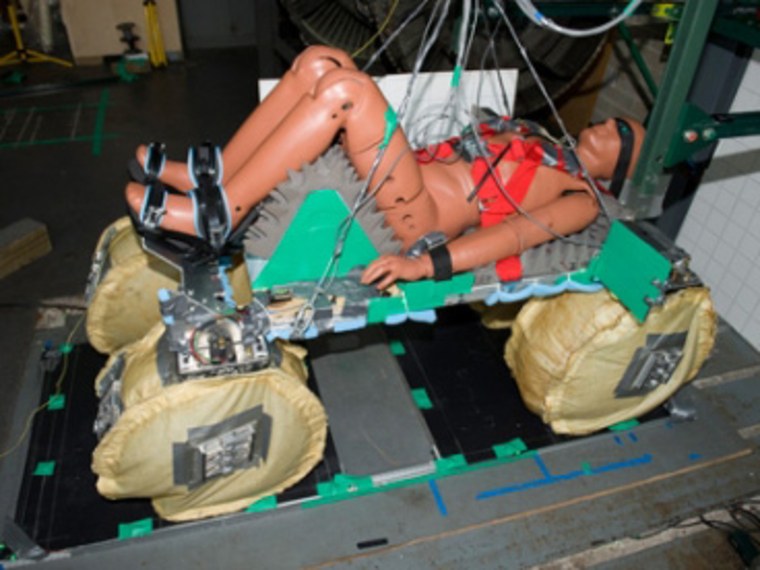New airbag technology that mimics nature's way of protecting seed embryos could take the bumps out of spacecraft landings.
The system consists of four cylinder-shaped air sacs designed to fully inflate during launch and landing, and to be partially inflated in between, providing seating for the astronauts during their flight. So far, tests of the 700-pound prototype, using a dummy, have encouraged its developer, who plans to present his results to NASA this fall.
The nature-inspired sacs are being developed for Orion, the space capsule that was originally part of NASA's Constellation program to send astronauts back to the moon. With moon missions no longer on NASA's agenda, Orion will be used only as an escape ship to carry astronauts home from the International Space Station in an emergency.
As an emergency vehicle, Orion will need to be prepared for the unexpected landing on earth instead of in the ocean. The original 1,100-pound system designed to protect Orion astronauts during a water landing would be too heavy for land: Essentially, the ground offers little shock absorption, and more weight would mean more damage upon impact, according to Sydney Do, lead developer of the new system.
"The advantage of an airbag-type system is that it can perform this same function but with a lighter system," said Do, a graduate research assistant at the Massachusetts Institute of Technology.
Biomimicry
Do's bio-inspiration blossomed from the inner workings of seeds, where a fluid called endosperm surrounds and protects the embryos from impact when being dispersed by wind or other means. Instead of endosperm, Do and his team used air.
"The idea was to treat each occupant as an 'embryo' and surround them in a personal airbag consisting of air," Do told TechNewsDaily.
"When crew positioning and impact-protection requirements were considered in the system design, this idea eventually evolved into an 'airbag seat' and then finally to a seat supported by airbags."
Basically the system consists of a seat surrounded by four cylindrical airbags each about the size of two vertically stacked pickup-truck tires arranged in a 2x2 configuration.
Dummy testing
To test the prototype, Do first created a computer model to analyze how characteristics such as airbag size would affect the system's protective capabilities. Next, he constructed a seat surrounded by four airbags made of Vectran, a high-strength synthetic fiber used for the airbags encasing rovers that landed on Mars.
Do then performed real-life drop tests to verify his mathematical model. A dummy was attached to the prototype and dropped from different heights to simulate the velocity an astronaut would experience just before impact. These dummy drops led to the design of special valves to allow the cylindrical airbags to vent air during impact.
The result: The airbag system survived dozens of drops, indicating the technology should work for an Orion landing.
However, there is still work to do, Do said. While the drop-testing was successful, the results show the effectiveness of the airbag system only for vertical drops. If Orion descended at an angle, the system could fail.
The project was funded by NASA and Do will present his results to the space agency this fall.
This article was provided by TechNewsDaily , a sister site of SPACE.com.
